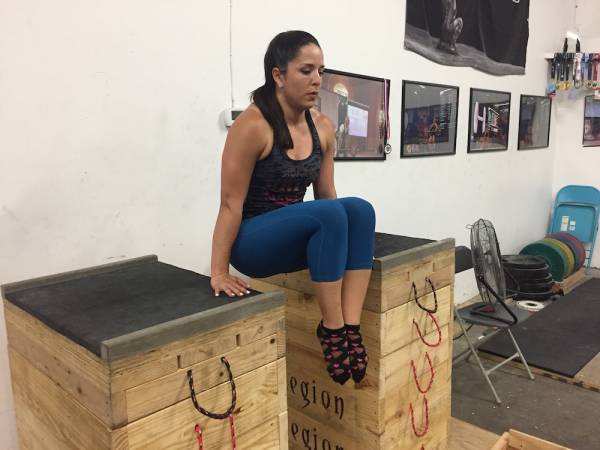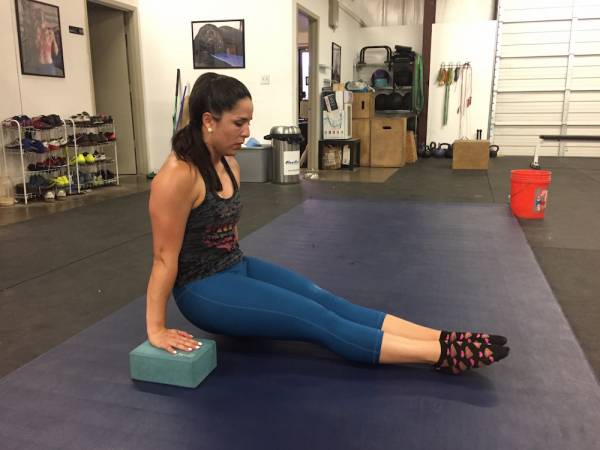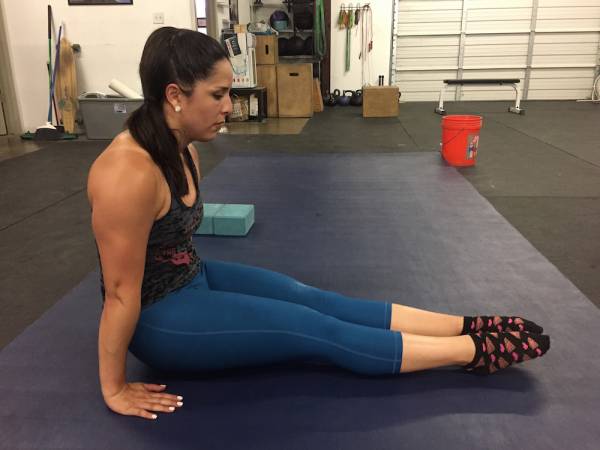The movement is often an overlooked and underrated exercise that offers a lot of bang for your buck. The L-sit is a static hold where you support yourself with your arms while holding your legs straight out in front of your body. There are so many different benefits and positions of the L-sit to convince you that it’s worth including in your normal training regimen.
Core Work
The L-sit requires static compression. It involves compressing your body at the hip, lifting your straight legs up towards your torso, and holding the position. There can be some limiting factors preventing you from getting into a good L-sit position but we are going to address your weak core first. If you are unable to lift your legs and hold them up while keeping them straight due to your core, then try these progressions:
Level 1: Tuck Up
- Lift your knees up as high as possible in a bent knee position and hold. The shorter lever created by keeping your legs bent makes it a little easier to recreate the compressed position necessary to maintain a hold. This should help you edge into building your core strength.

Level 2: Tuck to L-Sit Extensions
- Start in the bent knee position as was done in the simple tuck up (Level 1).
- Extend your legs out straight and then pull them back into a tuck position.
- Repeat this movement progressively trying to hold your straight leg position for increasing durations.
Straight Arm Strength
The role of your upper body is to hold yourself up off of the apparatus (e.g. parallettes) or floor. In the L-sit your arms should be straight and locked out while driving your shoulders down as hard as possible (shoulder depression). If you are weak or lack the range of motion for this then here are a couple of exercises that will transfer over to the L-sit shoulder depressions.
Level 1: Elevated Depression Presses
- Place objects of your desired height (like yoga blocks) on either side of you while you are seated on the ground.
- With your arms straight, drive your hands down into the blocks trying to lift your hips up off of the floor. Your feet can stay on the ground while doing this.

Level 2: Flat Depression Presses
- Seated on the ground with your legs straight out in front of your body, place your hands on the ground by your sides.
- Drive your hands into the floor with your arms straight trying to lift your hips up off of the ground. Your feet can stay on the ground.

Hamstring Flexibility
Another obstacle that may challenge some athletes trying to do an L-sit hold is hamstring flexibility. A limitation in hamstring flexibility can make it difficult or impossible to extend your legs while flexed at the hip. I would suggest addressing this with hamstring-specific flexibility and mobility exercises and not while trying to L-sit. Here are some of my favorite movements for this.
Jefferson Curls – This will work on increasing both hamstring flexibility and full compression.
- Start this movement by holding a light weight in your hands with your feet together and legs straight.
- Slowly lower the weight towards your feet reaching as far as possible.
- Then slowly curl back up to start.
Front Splits
- Start in a lunge position and extend your front leg until it is straight.
- From here, slide your front leg out as far as possible until you get a really good stretch in your front hamstring.
Skill Transfer
One of my favorite things about having athletes develop the L-sit is that I can use it to progress them to harder skills like V-sits, manna, and press handstands. It is also a great transition skill for movers.
Find creative ways to move in and out of L-sits! Challenge yourself! Here is a fun flow that incorporates L-sit and squat.
- Squat down and place your hands behind you on the floor.
- Extend your legs out to an L-sit.
- Pull your feet back under yourself returning to a squat.
This is just one example of the possibilities. Play around, build strength, gain control, and move better.






